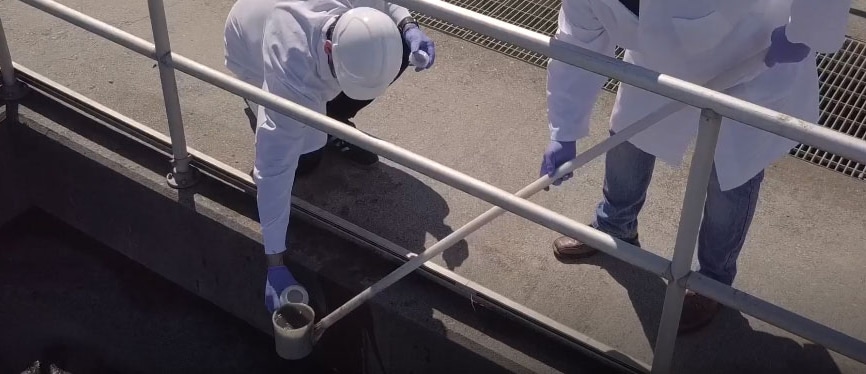Investing in Wastewater Detection Helps Protect People from Antimicrobial Resistance and COVID-19
Posted On: September 2022
- In 2018, CDC funded the University of South Carolina to measure antimicrobial resistance genes in wastewater and in treatment plant workers at municipal wastewater treatment plants.
- With additional funding from CDC, the researchers were able to build on this work and begin testing wastewater to measure levels of SARS-CoV-2 (which carries genetic information) as an indicator of whether COVID-19 infections are increasing or decreasing in specific communities.
- This work plays an important role as an early warning system to help stop the spread of deadly organisms in U.S. communities.

During the COVID-19 pandemic, wastewater testing has become more recognized globally as a useful tool for early detection of outbreaks and burden of disease in a community. U.S. communities have reported that wastewater surveillance data is providing critical information to support their COVID-19 mitigation strategies.
The framework for this approach was developed as part of a study to determine the burden of antimicrobial-resistant threats in wastewater prior to the pandemic. Through funding from CDC’s Antimicrobial Resistance Solutions Initiative in 2018, researchers at the University of South Carolina studied resistant germs in wastewater treatment plants. The findings from this study provided critical, foundational data to establish CDC’s National Wastewater Surveillance System (NWSS). When the COVID-19 pandemic began, CDC and University of South Carolina researchers were able to quickly build upon ongoing wastewater testing to track COVID-19 trends in communities across the United States.
This innovative research is helping public health officials understand true increases and decreases in COVID-19 cases within communities. NWSS (pronounced “news”) has provided critical data to inform guidance to protect wastewater workers, support wastewater surveillance for COVID-19, and develop best practices for this wastewater surveillance system.
As of July 2022, CDC has funded 46 states, five cities, and two territories to support COVID-19 wastewater surveillance. Partners at more than 1,000 testing sites have collected and submitted results to NWSS. These partners have collected more than 81,000 samples from municipal wastewater systems serving about two in five people in the United States (more than 130 million people). Additionally, CDC is continuing to invest in these capabilities by adding antimicrobial resistance wastewater surveillance capacity in states, territories, and tribes as NWSS continues to evolve.
Partnerships like this help CDC evaluate the performance of existing antimicrobial resistance monitoring systems, keep utility workers safe, and establish a foundation for using municipal sewage as an indicator of some infectious diseases circulating in communities. Learn more about how CDC is collaborating on research [PDF – 4 pages] with partners and how these investments are helping stop the spread of antimicrobial resistance, COVID-19, and other public health threats.